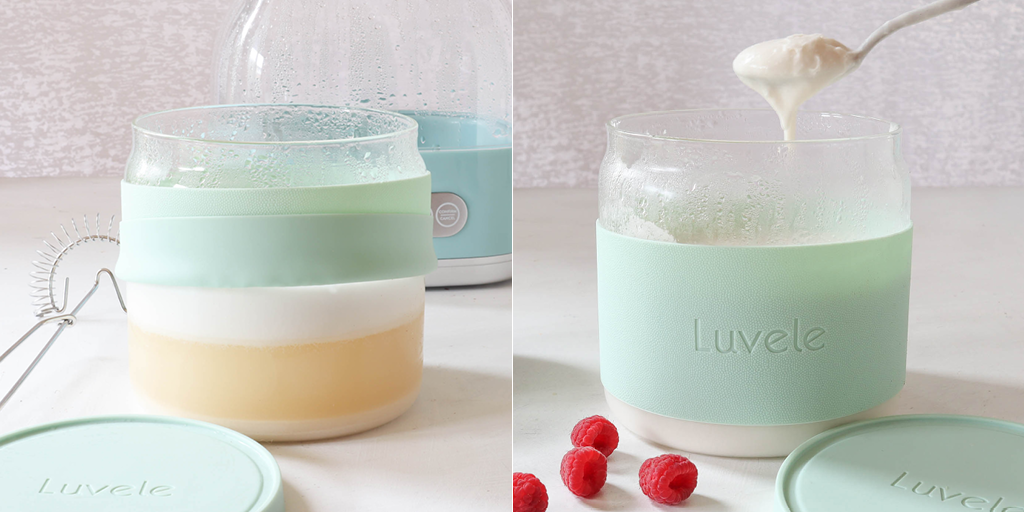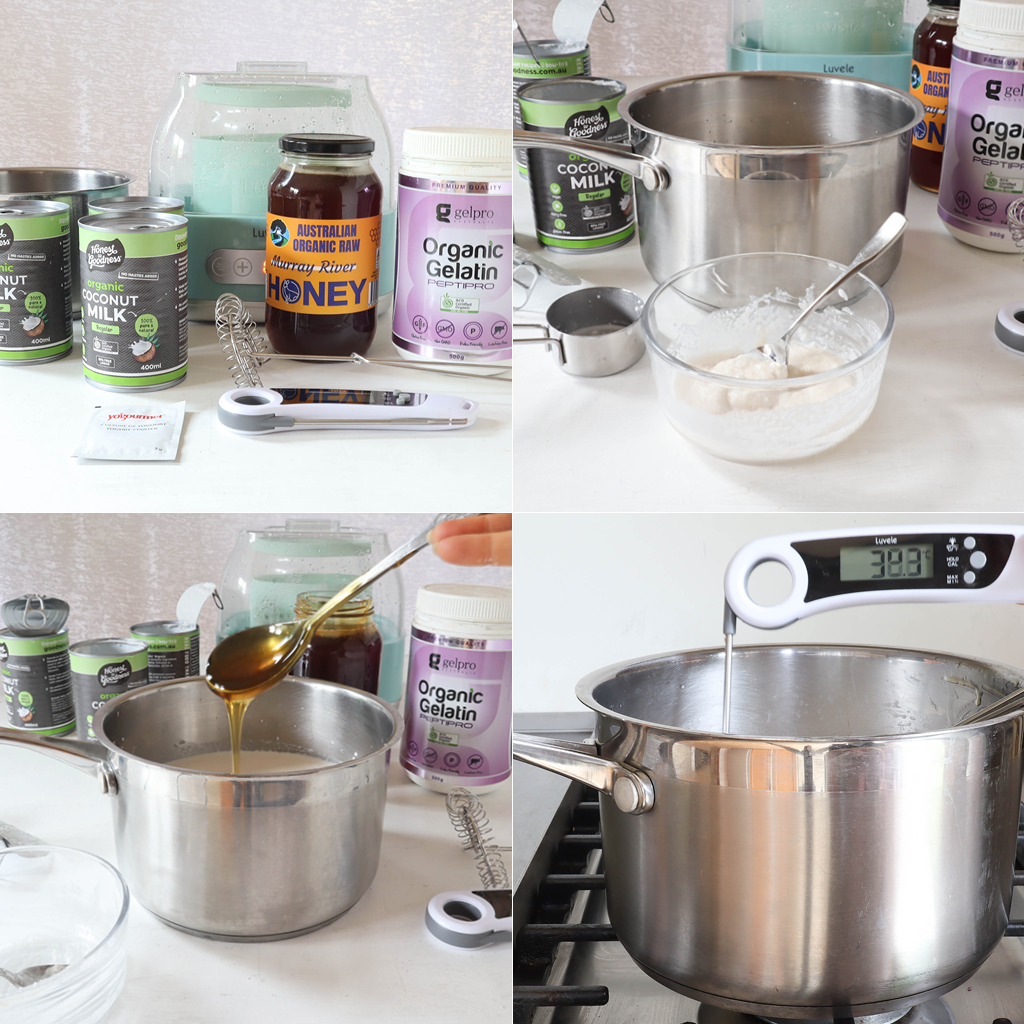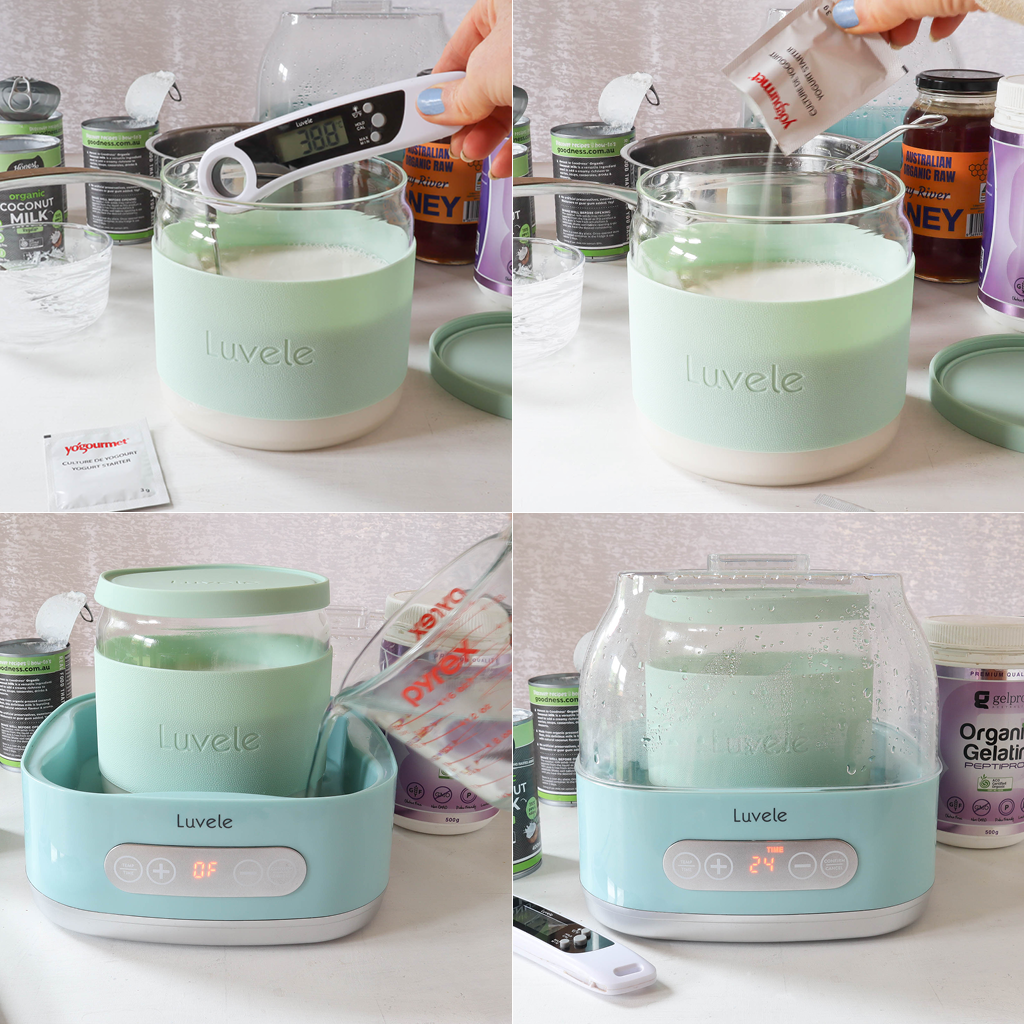Ihr Warenkorb ist leer
Add description, images, menus and links to your mega menu
A column with no settings can be used as a spacer
Link to your collections, sales and even external links
Add up to five columns
Add description, images, menus and links to your mega menu
A column with no settings can be used as a spacer
Link to your collections, sales and even external links
Add up to five columns

SCD & GAPS coconut yoghurt recipe
Barb Hodgens
Barb Hodgens loves to cook with alternative, healthy whole food ingredients, with a focus on gut health. Barb has overcome her own gut health issues through healthy eating. Share your ideas, comments and photos at the end of this post :)
24-HOUR YOGURT MADE WITH COCONUT.
Poor gut health is the root of many health problems, and one way to improve general health and vitality is to introduce fermented foods. Getting a dose of gut loving probiotics from homemade yogurt is a great place to start. Did you know that about 75 percent of the world’s population are genetically unable to properly digest dairy milk? If you want to avoid dairy but still get all the awesome probiotic benefits of homemade yogurt, making it from coconut is an easy and delicious alternative.
Coconuts are one of the most nutritious foods on the planet. They are a low-allergen food with medicinal properties that are antibacterial, antifungal, antiviral, antiparasitic and antioxidant. Eating homemade coconut yogurt is a therapeutic way to consume beneficial bacteria and balance out the native microflora (bacteria) in the gut as well as reduce inflammation.
Coconut yogurt is an easily tolerated fermented food that has become central to gut healing diets such as the ‘Specific Carbohydrate Diet’ (SCD) and ‘Gut and Psychology Syndrome’ (GAPS). Based on the science of the Specific Carbohydrate diet (SCD), coconut yogurt must be homemade.
On the Luvele recipe blog we have developed many coconut yogurt recipes however some include ingredients that are not permitted on SCD & GAPS gut healing diets. To eliminate any concern this recipe is 100% compliant.

COCONUT YOGURT BEHAVES DIFFERENT TO DAIRY
During fermentation, coconut milk does not thicken like dairy yogurt. So, unless you want a drinkable yogurt, a thickening additive is generally essential.
GELATIN - OUR FAVOURITE GUT LOVING THICKENER
Gelatin is an animal derived product rich in cell healing amino acids that strengthens the gut lining and therefore lowers inflammation - it's truly the perfect gut-loving thickener. Don’t use any old gelatin though, quality matters. We recommend a premium quality powdered gelatin. The amount specified in the recipe is a guide only. Too much gelatin will set your coconut yogurt like jelly. Experiment and add more or less to achieve your preferred texture.
WHAT KIND OF COCONUT MILK SHOULD I USE?
When choosing coconut milk, choose additive free and organic and watch out for BPA (an industrial chemical used in plastic). Like almost all canned foods, there is usually toxic BPA in the lining of canned coconut milk and cream. We have had great results with 'Biona Organics coconut milk'coconut milk but I'm sure there are other organic coconut milk brands that work just as well.
If you prefer not to use canned milk, you can learn how to make your own coconut cream from scratch the here.
COCONUT MILK WILL SEPARATE - DON'T PANIC!!
A quick word of warning; coconut milk a la natural won’t behave! Straight from the yogurt maker your homemade coconut yogurt will not look like the consistent, smooth and bright-white, store-bought varieties. Good quality, organic coconut milk will separate, even after fermentation. When refrigerated and left to set, coconut cream will rise to the top and separate from the coconut water. (see the picture below) Don't panic - there is nothing wrong! Depending on the brand of coconut milk you use, the water may be yellowish and you might even get a fine layer of solid coconut oil right on top of the cream. No problem - you can lift this off after it has chilled and whip the layers together! Once whipped, the coconut yogurt will not separate again.

STARTER CULTURE
You will need a yogurt starter culture to introduce the fermentation of bacteria to your coconut milk. Use the amount of starter culture indicated on the packet. A good multi-strain probiotic or the contents of a capsule may also be used. Here is a list of SCD & GAPS friendly yogurt starter cultures. For more on probiotics click over to 24 hour yogurt Vs a probiotic pill.
COCONUT YOGURT RECIPE
Thoroughly wash or sterilize your yoghurt container, whisk and other utensils with boiling water.
INGREDIENTS
3 x 400ml cans of coconut milk (organic BPA free and additive free)
1 tablespoon of raw honey
1 tablespoon (10 grams) of premium gelatin powder
Yogurt starter culture or probiotic capsule
METHOD
1. Pour the coconut milk into a large saucepan but leave behind a portion of coconut water from one can.
2. In a small ceramic bowl combine the gelatin powder and 1/4 cup of the reserved coconut water. Stir and then set aside for 3 minutes to swell.
3. Add the swollen gelatin powder and honey to the saucepan of coconut milk.
4. Place the saucepan on the stove top and gently warm to 95⁰-104⁰F (35⁰- 40⁰C) to activate the gelatin. Stir with a wire whisk to ensure the gelatin has dissolved. Do not boil.
5. Remove from the heat and pour the coconut milk into your yogurt making glass jar.

6. Add your preferred starter culture and gently whisk it in. NOTE: if you over heated the coconut milk you must wait until the temperature is within the range above. Adding live cultures to hot liquid will kill the bacteria.

7. Put the lid firmly on the glass yogurt jar and place into your yogurt maker.
8. Pour water slowly into the base. (The water must not be filled over the ‘tall line’ indicated on the inside wall of the maker). Then place the cover lid on top.
9. Use the digital control panel to set the temperature to 38° C, the time to 24 hours and then press ‘confirm’ to begin incubation.
10. When complete, the yogurt will be warm, runny and separated. Place the jar in the fridge for at least 6 hours to set.
11. The gelatin will set the coconut water and cream into two layers. This is normal. Whisk with a spoon or a stick blender to incorporate.
12. Serve and enjoy. The gelatin set 24-hour, coconut yogurt will last up to 10 days in the fridge.
PIN THIS RECIPE


SCD & GAPS coconut yoghurt recipe
24-HOUR YOGURT MADE WITH COCONUT.
Poor gut health is the root of many health problems, and one way to improve general health and vitality is to introduce fermented foods. Getting a dose of gut loving probiotics from homemade yogurt is a great place to start. Did you know that about 75 percent of the world’s population are genetically unable to properly digest dairy milk? If you want to avoid dairy but still get all the awesome probiotic benefits of homemade yogurt, making it from coconut is an easy and delicious alternative.
Coconuts are one of the most nutritious foods on the planet. They are a low-allergen food with medicinal properties that are antibacterial, antifungal, antiviral, antiparasitic and antioxidant. Eating homemade coconut yogurt is a therapeutic way to consume beneficial bacteria and balance out the native microflora (bacteria) in the gut as well as reduce inflammation.
Coconut yogurt is an easily tolerated fermented food that has become central to gut healing diets such as the ‘Specific Carbohydrate Diet’ (SCD) and ‘Gut and Psychology Syndrome’ (GAPS). Based on the science of the Specific Carbohydrate diet (SCD), coconut yogurt must be homemade.
On the Luvele recipe blog we have developed many coconut yogurt recipes however some include ingredients that are not permitted on SCD & GAPS gut healing diets. To eliminate any concern this recipe is 100% compliant.

COCONUT YOGURT BEHAVES DIFFERENT TO DAIRY
During fermentation, coconut milk does not thicken like dairy yogurt. So, unless you want a drinkable yogurt, a thickening additive is generally essential.
GELATIN - OUR FAVOURITE GUT LOVING THICKENER
Gelatin is an animal derived product rich in cell healing amino acids that strengthens the gut lining and therefore lowers inflammation - it's truly the perfect gut-loving thickener. Don’t use any old gelatin though, quality matters. We recommend a premium quality powdered gelatin. The amount specified in the recipe is a guide only. Too much gelatin will set your coconut yogurt like jelly. Experiment and add more or less to achieve your preferred texture.
WHAT KIND OF COCONUT MILK SHOULD I USE?
When choosing coconut milk, choose additive free and organic and watch out for BPA (an industrial chemical used in plastic). Like almost all canned foods, there is usually toxic BPA in the lining of canned coconut milk and cream. We have had great results with 'Biona Organics coconut milk'coconut milk but I'm sure there are other organic coconut milk brands that work just as well.
If you prefer not to use canned milk, you can learn how to make your own coconut cream from scratch the here.
COCONUT MILK WILL SEPARATE - DON'T PANIC!!
A quick word of warning; coconut milk a la natural won’t behave! Straight from the yogurt maker your homemade coconut yogurt will not look like the consistent, smooth and bright-white, store-bought varieties. Good quality, organic coconut milk will separate, even after fermentation. When refrigerated and left to set, coconut cream will rise to the top and separate from the coconut water. (see the picture below) Don't panic - there is nothing wrong! Depending on the brand of coconut milk you use, the water may be yellowish and you might even get a fine layer of solid coconut oil right on top of the cream. No problem - you can lift this off after it has chilled and whip the layers together! Once whipped, the coconut yogurt will not separate again.

STARTER CULTURE
You will need a yogurt starter culture to introduce the fermentation of bacteria to your coconut milk. Use the amount of starter culture indicated on the packet. A good multi-strain probiotic or the contents of a capsule may also be used. Here is a list of SCD & GAPS friendly yogurt starter cultures. For more on probiotics click over to 24 hour yogurt Vs a probiotic pill.
COCONUT YOGURT RECIPE
Thoroughly wash or sterilize your yoghurt container, whisk and other utensils with boiling water.
INGREDIENTS
3 x 400ml cans of coconut milk (organic BPA free and additive free)
1 tablespoon of raw honey
1 tablespoon (10 grams) of premium gelatin powder
Yogurt starter culture or probiotic capsule
METHOD
1. Pour the coconut milk into a large saucepan but leave behind a portion of coconut water from one can.
2. In a small ceramic bowl combine the gelatin powder and 1/4 cup of the reserved coconut water. Stir and then set aside for 3 minutes to swell.
3. Add the swollen gelatin powder and honey to the saucepan of coconut milk.
4. Place the saucepan on the stove top and gently warm to 95⁰-104⁰F (35⁰- 40⁰C) to activate the gelatin. Stir with a wire whisk to ensure the gelatin has dissolved. Do not boil.
5. Remove from the heat and pour the coconut milk into your yogurt making glass jar.

6. Add your preferred starter culture and gently whisk it in. NOTE: if you over heated the coconut milk you must wait until the temperature is within the range above. Adding live cultures to hot liquid will kill the bacteria.

7. Put the lid firmly on the glass yogurt jar and place into your yogurt maker.
8. Pour water slowly into the base. (The water must not be filled over the ‘tall line’ indicated on the inside wall of the maker). Then place the cover lid on top.
9. Use the digital control panel to set the temperature to 38° C, the time to 24 hours and then press ‘confirm’ to begin incubation.
10. When complete, the yogurt will be warm, runny and separated. Place the jar in the fridge for at least 6 hours to set.
11. The gelatin will set the coconut water and cream into two layers. This is normal. Whisk with a spoon or a stick blender to incorporate.
12. Serve and enjoy. The gelatin set 24-hour, coconut yogurt will last up to 10 days in the fridge.
PIN THIS RECIPE


Subscribe
Sign up to get the latest on sales, new releases and more …
Item is added to cart



